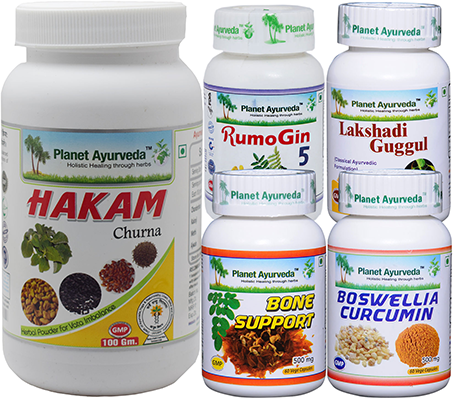The sacroiliac joint is located on the sacrum (tailbone) and the iliac portion of pelvic bone. Top of each ilium can be felt through the lower abdominal wall just below and lateral to the umbilicus. Pelvic bone connects to hip joint so that the upper portion of the leg bone ie. The femur can attach to the pelvis The sacroiliac joint is small and strong and also has strong ligaments attached, it does not move independently and transmits forces of the upper body to hips and legs and acts as a shock absorber. The dysfunction of the Sacro-iliac joint results in inflammation, numbness and tingling sensation. Let's discuss the details about the disease.

Introduction
Sacroiliac joint dysfunction is the condition which results from flawed movement of either one or both of two small firm joints at the base of the spine. The sacro-iliac joint has a small range of motion, providing stability .The sacro-iliac joint connects the pelvis to the spine by a strong set of the ligaments. Each sacro-iliac joint links an ilium bone to the sacrum, which mainly consists of the five vertebrae that are fused together at the base of the spine. The sacro-iliac joint dysfunction is also called by various names such as : Sacro-iliac joint disease, Sacroiliac joint syndrome, Sacro-iliac joint strain and Sacro-iliac joint inflammation etc. The inflammation of the joint results in sacroiliitis and may result in Sacroiliac joint dysfunction, misalignment of joint and degeneration of sacroiliac joint. In Ayurveda Sacro-iliac joint dysfunction is related to Tridosaj vyadhi in which all three dosha are aggravated.
Symptoms of Sacroiliac Joint Dysfunction
Symptoms of Sacroiliac joint dysfunction includes:- Difficulty in sitting at one place for too long time due to pain
- Aberrant sacroiliac movement pattern
- Local tenderness of posterior aspect of sacroiliac joint
- When the joint is mechanically stressed then pain occurs eg forward bending
- Pain is usually localised over the buttock.
- Absence of neurological deficit/ nerve root tension signs
- Patients complain about pain while sitting down, climbing and lying on the ipsilateral side of pain.
- Hip pain
- Sciatic leg pain
- Lower back pain/ Groin pain
Causes of Sacroiliac Joint Dysfunction
Cause of this disease are:
- Hypermobility: The condition occurs when ligaments which connect the sacrum to the pelvis are very loose. This condition leads to instability and too much movement in Sacro-iliac joints.
- Ankylosing Spondylitis: It is a chronic inflammatory disease which causes the inflammation between the vertebrae and facet joints between pelvis and spine.This may lead to the Sacro-iliac joints fusing, resulting in reduced flexibility.
- Uneven leg length: The pain of Sacro-iliac joint can be triggered when one leg is longer or weaker than the other one, which results in uneven movement and stress in the pelvis.
- The sacro-iliac joint may bear additional stress in cases where a spinal fusion was performed down to the sacrum, which leads to the irritation of the Sacro-iliac joint.
- Hypomobility: Hypomobility is also called pathological hypomobility which leads to a very little mobility of sacroiliac joints and is often due to the degenerative changes occurring in the joints.
- Pregnancy: Sacroiliac joints must loosen and stretch to accommodate childbirth.
- Infection: Sacroiliac joint becomes infected in very rare cases.
- Arthritis: Osteoarthritis can occur in sacroiliac joints, as can ankylosing spondylitis- a type of inflammatory arthritis which affects the spine.
- Traumatic injury: Sudden impact like: motor vehicle accident or a fall, damages the sacroiliac joint.
Diagnosis
- CT scan, X-Ray and MRI are performed but re not much helpful
- SPECT/CT helps in the detection of sacroiliac joints.
- Thigh trust: The test applies anterior posterior shear stress on sacro-iliac joints. Patient lies in supine position with one hip flexed to 90 degrees and the examiner stands on the same side as the flexed leg. The examiner provides either a quick thrust or steadily increasing pressure through the line of the femur.
- Iliac Gapping test: Distraction can be performed on the anterior sacroiliac ligaments by applying pressure to anterior superior iliac spine.
- FABER or Patrick test: This test is used to identify the pain which may come from the sacroiliac joint during flexion, external rotation and abduction, the examiner externally rotates the hip while the patient lies in supine position. And then downward pressure is applied to the medical knee stressing the both sacroiliac and hip joint.
- Gaenslen test: This test applies torsion to the joint. With one hip flexed onto the abdomen and the other leg in order to achieve hip extension and stress the sacroiliac joint.
- Iliac Compression test: Apply compression to joint with patient lying on his\her side. The pressure is applied downward to the uppermost iliac crest.
Management of Sacroiliac Joint Dysfunction
If the pain is caused due to pregnancy or recent childbirth, in that case give your body proper rest. Management of Sacro-iliac joint dysfunction includes:
- Injection of the Steroids
- Heat or ice application to the injured area
- Physical adjustments by a medication
- Physical therapy
- Over the counter pain medication
- Brace for the lower back
- Surgery
- Spinal manipulations
Complications of Sacroiliac Joint Dysfunction
Ayurvedic Overview of Sacroiliac Joint Dysfunction
Ayurveda is the science of Indian medicine which has served mankind for many years. Ayurvedic medicines and therapies are not only managing the disease but also provide strength and keep the body healthy. In the Sacro-iliac joint dysfunction there is a presence of numbness, tingling sensation and pain in the hip region. In Ayurveda these conditions are related as: Inflammation of the joint is due to aggravated Pitta dosha, aggravated Vata dosha results in pain, numbness and tingling sensation of the joint and aggravation of the Kapha dosha reduces the mobility of the joint. As the disease occurs due to aggravation of all Tridosha (Vata, Pitta and Kapha), this is a tridoshaja vyadhi and is managed by pacification of the aggravated doshas. Vata, Pitta and Kapha aggravation results in the accumulation of this disease and here are some of the single herbs which balances the aggravated dosha :
Haridra (Curcuma longa), Ashwagandha (Withania somnifera), Kalonji (Nigella sativa), Guggulu (Commiphora mukul), Arjuna (Terminalia arjuna), Shallaki (Boswellia serrata), Methi (Trigonella foenum-graecum) and Shrinkhala (cissus quadrangularis) etc. All these herbs help in balancing the aggravated doshas and reduce pain and inflammation.
Some of the herbal formulations which are very effective in Sacro-iliac joint dysfunction are: Kaparadika bhasma, Rasnairandadi kshaya,Kukutanda twak bhasma,Kaishore guggulu, Dashmoolarista and Lakshadi guggul etc.
Herbal Remedies for Sacroiliac Joint Dysfunction by Planet Ayurveda
Planet Ayurveda is a US-FDA registered, GMP certified and ISO 9001:2015 certified company. All the formulations are formulated under MD Ayurveda experts, and have no side effects. These formulations did not contain any type of chemicals, preservatives, colours and dyes etc. Planet Ayurveda produces herbal remedies for management of Sacro-iliac joint dysfunction are given below:
Product List:
1. LAKSHADI GUGGULU 2. HAKAM CHURNA 3. BONE SUPPORT 4. RUMOGIN 5 5. BOSWELLIA CURCUMIN

Products Description
1. LAKASHADI GUGGUL
It is a classical formulation and is very useful in disorders of the bones and musculoskeletal system. Ingredients involved in this formulations are: Shuddh guggul ( Purified Commiphora mukul), Ashwagandha (Withania somnifera), Nagabala (Grewia populifolia), Laksha (Laccifer lacca) and Arjuna (Terminalia arjuna) etc. This formulation greatly works on the dysfunction of the joints and bones. The formulation contains components like Asthishrinkhala which helps in the formation of the bone which is damaged or fractured. In Sacro-iliac joint dysfunction the formulation really works very effectively.
Dosage: 2 tablets twice daily
2. HAKAM CHURNA
This formulation is mainly used to pacify the aggravated dosha. ( Vata, Pitta and Kapha) It is a polyherbal formulation contains ingredients: Ajwain (Trachyspermum ammi), Methi (Trigonella foenum graecum), Kalonji (Nigella sativaa) and Chandershoor (Lepidium sativum). These Herbs contain analgesic and anti-inflammatory properties. Hakam churna pacifies the aggravated Vata dosha and also gives strength to the bones.
Dosage: 1 tsp twice daily
3. BONE SUPPORT
As the name of the formulation suggests Bone support means that the formulation give support to bones and provide strength to body.The formulation contains ingredients : Mukta ( Compound of pearl calcium), Hadjod (Cissus quadrangularis), Praval pishti (Corallium rubrum). Arjun (Terminalia arjuna) and Suhanjana beej (Moringa oleifera) etc. The Suhanjana beej contains properties like analgesics, anti-inflammatory and has abscess healing action. Praval pishti and Mukta are natural calcium, derived from corals, pearls etc.and are very helpful in the healing and adhesion of degenerative joints and bones. Hadjod contains adhesive ( Sandhaniya) property which aids adhesion and adhesion of fractured bones. It also gives relief from pain and reduces the inflammation which is caused due to fracture. Arjuna contains the Vranropan property which heals the bones and is effective in wounds. Bone support plays a very effective role in the management of the Sacro-iliac joint dysfunction.
Dosage: 1 capsule twice daily
4. RUMOGIN 5 CAPSULES
Rumogin 5 capsules is the product of Planet Ayurveda contains ingredients: Pippali (Piper longum), Sonth ( Zingiber officinale), Maricha (Piper nigrum), Shallaki (Boswellia serrata) and Haridra (Curcuma longa). The formulation contains anti-inflammatory properties and also useful in numbness, tingling sensation etc. It also pacifies the Vata dosha, gives energy to the muscles and also provides normal range and smoothness to the joint. The formulation plays a vital role in the management of the Sacro-iliac joint dysfunction.
Dosage: 1 capsule twice daily
5. BOSWELLIA CURCUMIN
Boswellia curcumin is a product of Planet Ayurveda containing ingredients like: Haridra (Curcuma longa) and Shallaki (Boswellia serrata). This formulation has Antipyretic, Anti-inflammatory and Analgesic properties which reduce the pain, inflammation and other associated symptoms related to Sacro-iliac joint dysfunction. The formulation heals the wound and provides strength to the bone and musculoskeletal system.
Dosage: 1 capsule twice daily
Contact Planet Ayurveda to provide you the costing / ordering and delivery information at - [email protected] or call at +91-172-5214040 Or Check Website - www.PlanetAyurveda.com
CONCLUSION
The Sacro-iliac joint dysfunction is the condition which causes inflammation, pain, numbness and tingling sensation in the affected joint. The Hypomobility and Hypermobility of the joint leads to this condition. Sacroiliac joint dysfunction in Ayurveda occurs due to the aggravation of tridosha (Vata, Pitta and Kapha) hence known as tridoshaj vyadhi. Ayurveda gives us natural medicines which can completely manage the dysfunction of Sacro-iliac joints. We have discussed the herbal remedies produced by Planet Ayurveda, which give very good results in this disease. In modern times the condition is not diagnosed properly but provides relief from the symptoms for a short time.

